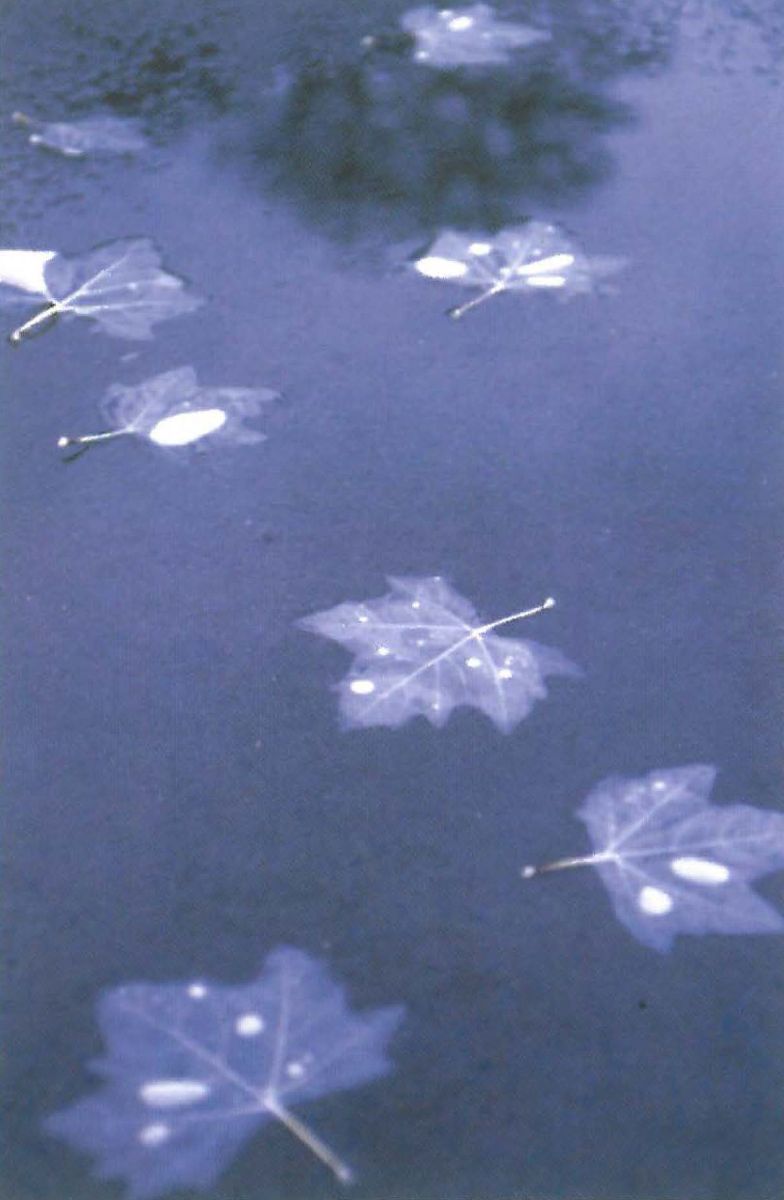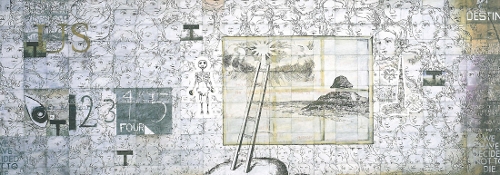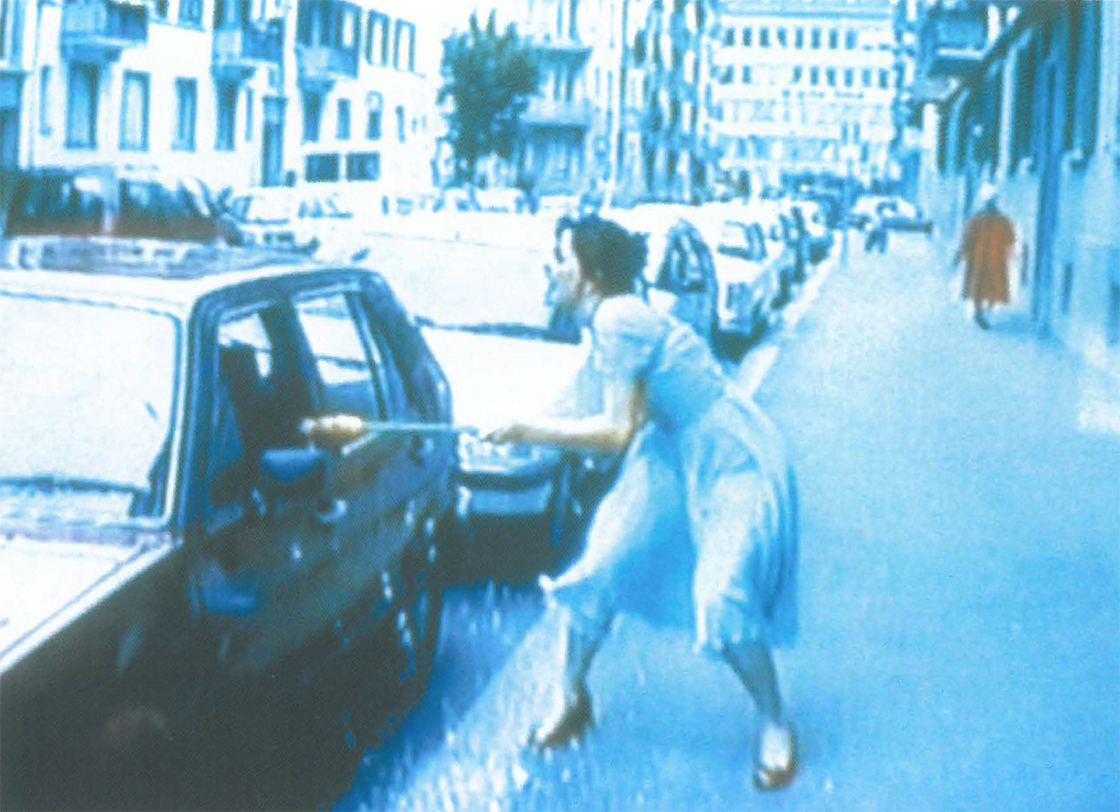
In trying times it can be valuable to look at art as a means of reflection on current circumstances. And in the light of recent world events, this year's Melbourne Festival visual arts program provided ample opportunities for this. Broadly some of the themes covered are belief and community, architectural space and metaphor, the monument and memorial, and the feminine sublime and in many respects the artists' works gave us space for contemplation. Perhaps an indication that artists are in touch sooner than we think with the unspoken transitions that occur in the world.
The work Stacked Hotel Room, No 8 by British artists Sonya Hanney and Adam Dade, where the artists rent a hotel room and go about stacking all the furniture into a block-like structure, photographing it and then returning the room to normal, is a seemingly absurd, almost trite piece. Looked at in terms of war it could be read as an attempt to find new order or structure by creating a futile protective barricade. But without this sort of framework the piece tends towards meaningless activity for art's sake.
The work of Jean-Jacques Rullier, a French artist and something of an art nomad, is a poetic exploration of common humanity. His poignant installation 10 Visits To 10 Holy Places at Melbourne's Jewish Museum allows the viewer a moment of quiet contemplation with his drawings of holy places including the Wailing Wall, the Dome of the Rock, a Shinto Shrine, and a Hindu temple. Each of these sites is finely drawn as an aerial architectural diagram to which small images of the intimate activity and detailing of the building have been added. The individual pew-like seat structures for viewing each drawing makes the act of looking very personal, contemplative and yet active - a virtual journey of the mind into each space, re-articulating the tourist experience into a deeper understanding of each holy place and hinting at a fundamental need for contemplative spaces within communities.
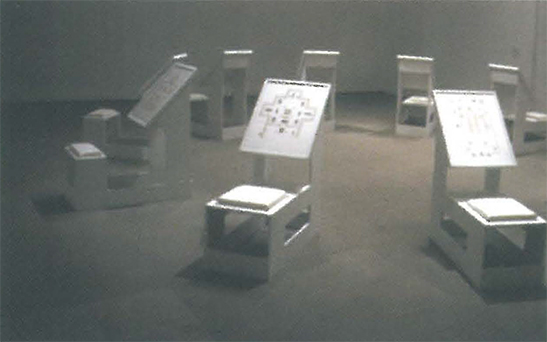
paper, publications, installation.
The work of Tacita Dean in Under/Above at Span Galleries also delves into contemplative space using 16mm film projections. Her slow narratives require the viewer to persist and take time to experience time passing. Fernsehturn plays on ideas of the sublime in the international setting of the revolving restaurant. The camera is set at a distance from a group of diners who are looking out of the window, pointing and exclaiming at what they see below. The viewer never gets close to the subject in the film, nor can the diners reach or properly see the view below. The restaurant becomes a secular venue for sharing an experience of the ineffable, the sublime - a thing once sought in places of worship and relics.
Deans' work Gellért in Humid, the group show curated by Juliana Engberg at ACCA, is a journey into the watery world of women bathers in a Turkish bathhouse. Two other works in the show allude to this watery female world, Mariele Nuedeker's intimate and aptly titled work Things Can Change In A Day, a small, gnarled and truncated forest submerged in a viscous fluid and encased in a glass box, (the drowned sublime or a dream space?) and Ann Hamiltons' three untitled video pieces which ooze sexuality and the bodily viscosity of woman. In one, a woman gently rolls a mouthful of shiny pebbles around in her mouth, in another water drizzles slowly over a woman's ear.
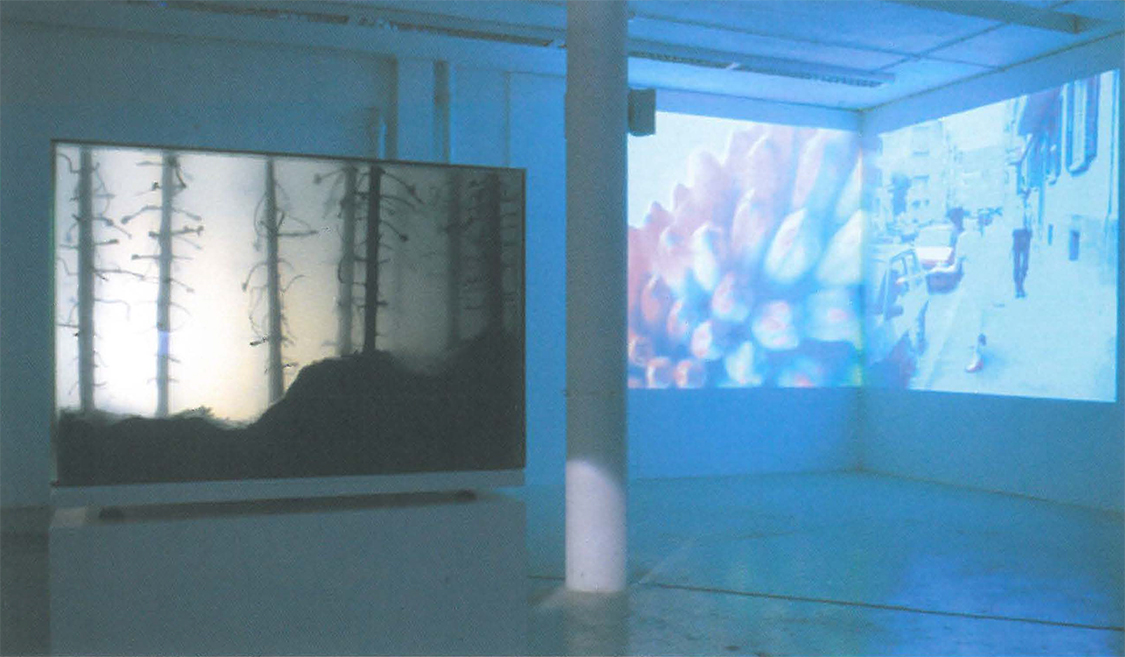
In a world dominated by the decisions of men Humid has a refreshingly sensual, female and precocious outlook. Pippolotti Rist's video work Ever is Overall is a hilarious piece in which a stylish woman in red shoes walks gaily down the street carrying a huge red-hot poker flower. Without changing her expression she swings the flower to smash every second car window in the street. And just keeps walking.
The idea of the fragile monument received some focus and discussion during the two days of forums held as part of the Festival in conjunction with RMIT at the Capitol Theatre. Participating artists talked through their own strategies when attempting to memorialise events in history, the residue of conflict or the everyday. Christine Borland's work Winter Garden: Mentha Australis, a series of hand-blown glass bladders filled with alcohol containing bleached white leaves, are a quiet monument to life and the preservation of things.
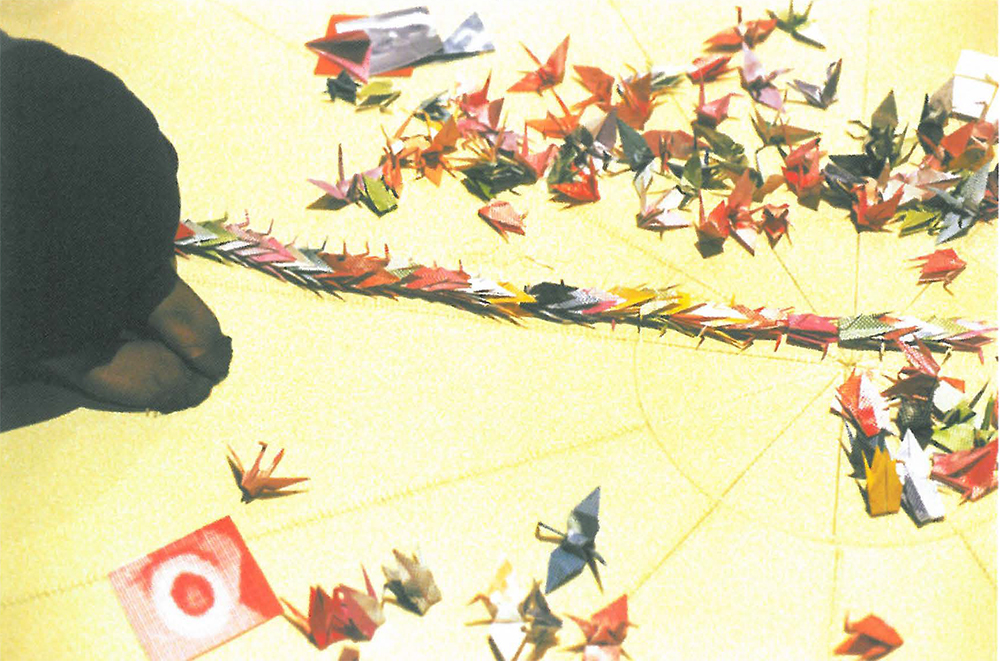
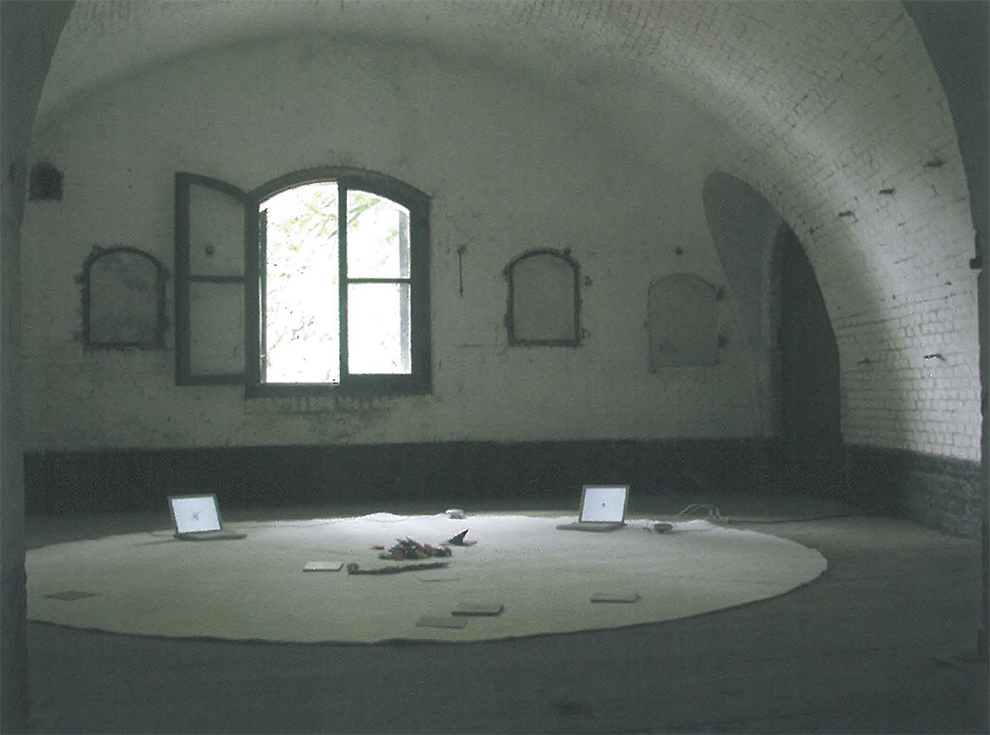
At CCP Marie-Ange Guilleminot presents her Hiroshima memorial project The White Transformation Parlour which requires the audience to fold origami paper cranes in memory of the life and death of the Japanese girl who got people all over the world folding cranes. This project hints at the need for collective responsibility for remembrance.
All the exhibitions were stylistically linked and the participatory nature of some brought the audience into a practical dialogue with the content being proposed. Overall the program created a much-needed space for contemplation and critique in relation to the times.
